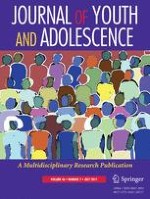23-09-2016 | Empirical Research
Individual in Context: The Role of Impulse Control on the Association between the Home, School, and Neighborhood Developmental Contexts and Adolescent Delinquency
Gepubliceerd in: Journal of Youth and Adolescence | Uitgave 7/2017
Log in om toegang te krijgenAbstract
Social ecological theories and decades of supporting research suggest that contexts exert a powerful influence on adolescent delinquency. Individual traits, such as impulse control, also pose a developmental disadvantage to adolescents through increasing risk of delinquency. However, such individual differences may also predispose some youth to struggle more in adverse environments, but also to excel in enriched environments. Despite the prominence of impulse control in both developmental and criminological literatures, researchers are only beginning to consider impulse control as an individual characteristic that may affect developmental outcomes in response to environmental input. Using a racially diverse (Latino 46 %; Black 37 %; White 15 %; other race 2 %) sample of 1,216 first-time, male, juvenile offenders from the longitudinal Crossroads Study, this study examined key interactions between baseline impulse control and the home, school, and neighborhood contexts in relation to delinquency within the following 6 months. The results indicated that even after accounting for prior delinquency, youth in more negative home, school, and neighborhood contexts engaged in the same amount of delinquency in the following 6 months regardless of their level of impulse control. However, the effects of positive home, school, and neighborhood contexts on delinquency were stronger for youth with moderate or high impulse control and minimally affected youth with low impulse control. The findings suggest two risk factors for delinquency: low impulse control as a dispositional vulnerability that operates independently of developmental context, and a second that results from a contextual vulnerability.
